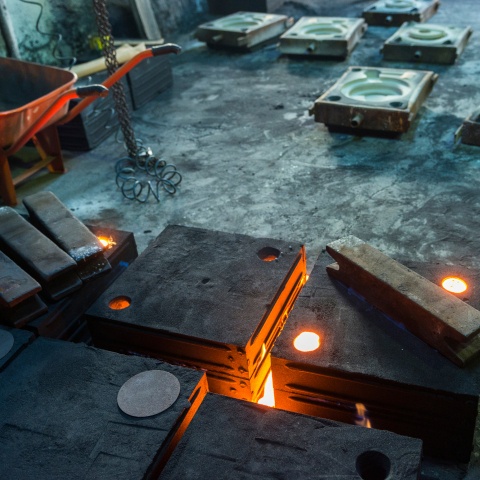Casting iron is a centuries-old craft that seamlessly blends artistry and scientific precision. It has played a pivotal role in the development of human civilization, from crafting tools and weapons to building infrastructure and creating beautiful sculptures. This guide will delve into the intricate world of casting iron, exploring the processes, techniques, and the fascinating interplay between art and science that defines this ancient craft.
Historical Significance:
Casting iron has a rich historical legacy, dating back to ancient civilizations like the Greeks, Romans, and Chinese. These early iron casters forged utilitarian objects, such as cookware, weapons, and tools. As the art evolved, it was used to create intricate sculptures and ornamental pieces. The Iron Age marked a significant turning point in human history, driven by the mastery of iron casting techniques.
The Materials:
-
Iron Ore: Casting iron begins with the extraction of iron ore. The ore is typically a combination of iron and other elements, which must be separated through a process called smelting. This process involves heating the ore to high temperatures to extract the pure iron.
-
Pig Iron: The extracted iron is known as pig iron, which is high in carbon content and brittle. This pig iron serves as the primary raw material for iron casting.
-
Additives: Various additives, such as scrap iron and alloys, are mixed with pig iron to achieve the desired properties like strength, hardness, and heat resistance.
The Casting Process:
-
Pattern Making: The first step in iron casting is creating a pattern or mold. The pattern is usually made from wood, metal, or plastic and represents the final shape of the casting. It's carefully crafted by skilled pattern makers.
-
Molding: The pattern is placed in a sand mold. Special foundry sand, often mixed with clay and water, is used to create a mold around the pattern. This mold will later serve as the negative space for the iron to fill.
-
Melting: The pig iron and additives are melted in a furnace at extremely high temperatures, usually exceeding 2,000 degrees Fahrenheit. The molten iron is a fiery and mesmerizing sight, essential to the process.
-
Pouring: Once the iron is molten, it is poured into the prepared mold. This requires precision, as the flow of iron must fill the mold completely without any interruptions.
-
Cooling and Solidification: As the iron cools, it solidifies within the mold. This is a critical phase, as it determines the final shape and properties of the casting. A controlled cooling rate is essential to avoid defects.
-
Breaking the Mold: After the iron has cooled and solidified, the mold is broken open, revealing the rough casting inside. This often involves breaking away the sand, which can be a delicate process to avoid damaging the casting.
-
Finishing: The rough casting is then carefully cleaned, excess material is removed, and any imperfections are corrected through processes like grinding, machining, and welding.
The Artistry:
While casting iron is fundamentally a scientific process, it's also deeply rooted in artistic expression. Skilled artisans use their creativity to bring life to their creations. Whether it's a functional piece like a sculpture or a decorative object, the artist's touch is evident in the final product. The choice of pattern, the intricacy of details, and the finish all contribute to the artistic appeal of the cast iron piece.
The Science:
-
Metallurgy: Iron casting involves a deep understanding of metallurgy. The selection of additives, the temperature at which iron is melted, and the cooling process all impact the final properties of the cast iron, such as hardness, strength, and corrosion resistance.
-
Thermal Dynamics: The control of temperature during the melting and pouring stages is crucial. Iron casting relies on the principles of thermal dynamics to ensure that the molten iron flows evenly into the mold and solidifies without defects.
-
Material Science: Advances in material science have led to the development of specialized alloys for specific applications. Engineers and scientists work hand-in-hand with foundry workers to optimize the composition of cast iron for various purposes.
Modern Applications:
Iron casting remains relevant in the modern world. It is used in the manufacturing of automobile parts, machinery, pipes, and even architectural elements. The strength and durability of cast iron make it indispensable in many industries. Additionally, artistic iron casting continues to thrive, with contemporary artists pushing the boundaries of the medium to create stunning sculptures and installations.
Conclusion:
The art and science of casting iron represent a remarkable fusion of creativity and technical precision. From its historical significance to its modern applications, iron casting continues to captivate and inspire. Whether you're an artisan seeking to create a masterpiece or an engineer working on innovative solutions, understanding the intricacies of iron casting is a journey that spans centuries and embodies the essence of human ingenuity. Embrace the heat, harness the elements, and cast your vision in iron—a true testament to the enduring legacy of this extraordinary craft.


No comments yet